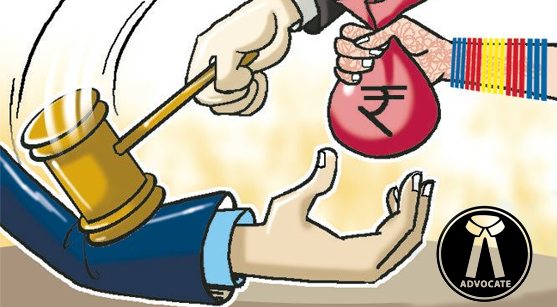Anti-Dowry Act: a powerful weapon against domestic violence
Anti-dowry section has been introduced so that it can be used as an armour for girls who go through harassment and cruelty of the societies devil ‘dowry,’ but the armour is used in the other way also. In today’s world, the section is used to harass the husband and his family. As stated by the Supreme Court, “The simplest way to harass is to get the husband and his relatives arrested under this provision.”
Violence against women in India is a shameful fact. Dowry and dowry-related problems cause a large number of these cases. The amendments of 1980 were targeted at the issue of domestic violence. Under Section 498A on Indian Penal Code, a new law was brought into action in 1983 amendment. This was specifically designed for married women who have been the subject of violence done by the husband and/or the in-laws.
As per this section, the accused or the offenders of the crimes are subject to imprisonment. They will be charged with a fine. If and when an official complaint is lodged by the victim or any of the victim’s relative, the law will deem the offence non-bailable and non-compoundable. Also, the offence will be a cognizable that means the authorities can arrest anyone of the accused without any warrant.
Looking at this scenario, the Supreme Court looked into the matter and laid down eight new directions:
- Each state government is responsible to instruct and educate the police about the routine arrests under Section 498 A and complete the procedure under Section 41 of the CRPC.
- The state governments will provide Section 41 sub-clauses checklist to all police officer.
- This checklist is required to be filled in with reasons of arrest explained and the materials supporting the arrest listed by the police officers. Then the checklist should be forwarded to the magistrate.
- The concerned magistrate will pass the verdict or order detention after they use a checklist for the purpose of forming a judgment.
- If the decision of not arresting any accused is arrived at, this should be communicated to the magistrate with two weeks of the date of the institution. All the reasons of the decision should accompany the decision.
- Within two weeks of the case being filed, the accused will be given a notice of appearance, along with the reasons given in written format under Section 41A of CRPC.
- Any police officer will be punished for contempt of the high court if he fails to perform these departmental operations.
- The high court will set forth departmental actions against any magistrate if he/she authorizes detention without recording the reasons behind the judgment.
The Supreme Court also stated with clarity that the magistrate should consider preliminary materials and evidences as applicable under Section 41 checklist produced by the police officer before he/she declares any further detention. In other word, the detention must come as a verdict after the magistrate has given full attention to the materials related to the checklist.
And as per another judgment of Supreme Court, the court stated that if the accusation of cruelty against the husband and the in-laws filed under Section 498A (of Indian Penal Code) by a woman is found false, the concerned man can opt for a divorce.
The misuse of this provision is not something that is not known to the Indian judicial system, thus such judgments are passed and a check can be kept on the number of false cases filed by women in order to protect the men as it is well accepted by law, that the women is not always the weaker sex.


